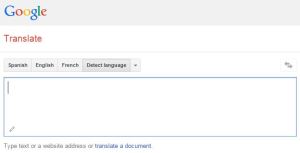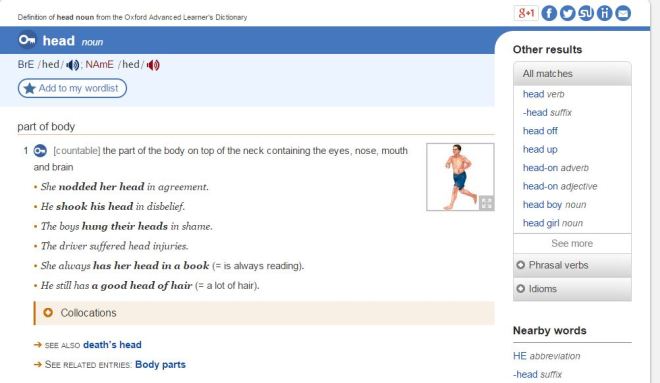 I think digital linguistic tools like Google Translate are great. But like many tools, I have seen Google Translate abused by EAP writing students in submissions of wonky single-word “synonyms” and incomprehensibly translated passages that the student thought I’d never notice.
I think digital linguistic tools like Google Translate are great. But like many tools, I have seen Google Translate abused by EAP writing students in submissions of wonky single-word “synonyms” and incomprehensibly translated passages that the student thought I’d never notice.
I try to counter potential abuse with a bit of education and training, rather than outright banning the use of Google in class. The key point I try to drive home is that most Google translations sound ridiculous, and that once a student hits even a low intermediate level, the texts that they themselves can produce are actually much better. It’s a matter of breaking the all-out reverence many students have for machines and showing them that when it comes to language, humans still trump computers in many areas and that they should trust their own language ability more.
I think there are a few ways to do this: the short way and the long way. Revealing Google Translate’s shortcomings by explaining in detail how it works would be the longer way. If you go this route, Larry Ferlazzo has an amazing list of resources here on Google Translate and how it works. Another interesting video is this article from a few days ago on Gizmodo, entitled Why You can Never Rely on Google Translate. If I were teaching an EAP class of applied linguists, computer science and/or engineering students or if out coursebook had a unit on IT or technology that I wanted to expand on, I might bring one of these videos or articles into class.
If I wanted to cut to the chase, though, I would rather prepare a short demo to show my students how Google Translate is not a substitute for good writing or good tools. I’d distribute a short text in digital format, perhaps something we’d read together in class, and ask students to put it through Google Translate into their L1, and then comment on some of the structures and vocabulary shortcomings they came across in the translated text. Moral of the story: “This is what it’s like to read a text that’s been fed through a translator! Doesn’t it sound silly? Don’t sell yourself short by submitting something like this to your teacher!”
A personal pet peeve of mine, though, is the use of Google Translate by intermediate or advanced students as a dictionary for single words when its so clearly inadequate and there are so many great digital dictionaries and collocation tools out there. If I’m working with a class who share the same L1, (Spanish, for example, in the example below), I’d pop up the entry for a common word as entered into Google Translate and into something like the Oxford Advanced Learners Dictionary, and put them up side-by-side on the projector. A discussion on collocation, parts of speech, phrases/chunks, register, etc., would be bound to ensue.
Ideally, some discussion about the shortcomings of Google Translate as a tool for writing, and the presentation of some more helpful alternative tools acts as preventative medicine and prevent me from having to bring it up in a lecture on academic integrity should an term papers get submitted with machine-translated passages. Your mileage may vary…




Leave a reply to eflnotes Cancel reply